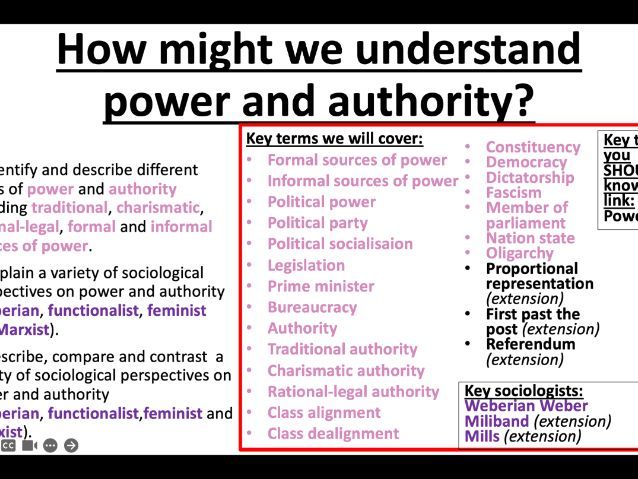

-
Detailed lesson with lots of scaffolding based on adaptive teaching that help students understand the different forms of power and authority, explain a variety of sociological perspectives on power and authority (Weberian, functionalist, feminist and Marxist).
-
Cover the following key terms:
Formal sources of powerÂ
Informal sources of powerÂ
Political power
Political party
Political socialisaion
Legislation
Prime minister
Bureaucracy
Authority
Traditional authority
Charismatic authority
Rational-legal authority
Class alignment
Class dealignment
°ä´Ç²Ô²õ³Ù¾±³Ù³Ü±ð²Ô³¦²â​
¶Ù±ð³¾´Ç³¦°ù²¹³¦²â​
¶Ù¾±³¦³Ù²¹³Ù´Ç°ù²õ³ó¾±±èÌý​
¹ó²¹²õ³¦¾±²õ³¾â€‹
Member of parliament ​
Nation state​
°¿±ô¾±²µ²¹°ù³¦³ó²âÌý​
Proportional representation (extension)​
First past the post (extension)​
Referendum (extension) -
Covers the following sociologists: Weber, Miliband, Mills
-
Key term and definition sheet for the lesson included
-
Lesson includes a teaching to all activity
-
ANSWERS TO ALL MAIN ACTIVITIES INCLUDED BUT PLENARY
-
Makes references to the power definition students learn in the family unit and how it differs to Weber’s definition of power.
-
RESOURCES CAN BE FOUND AT THE END OF PPT
Something went wrong, please try again later.
This resource hasn't been reviewed yet
To ensure quality for our reviews, only customers who have purchased this resource can review it
to let us know if it violates our terms and conditions.
Our customer service team will review your report and will be in touch.